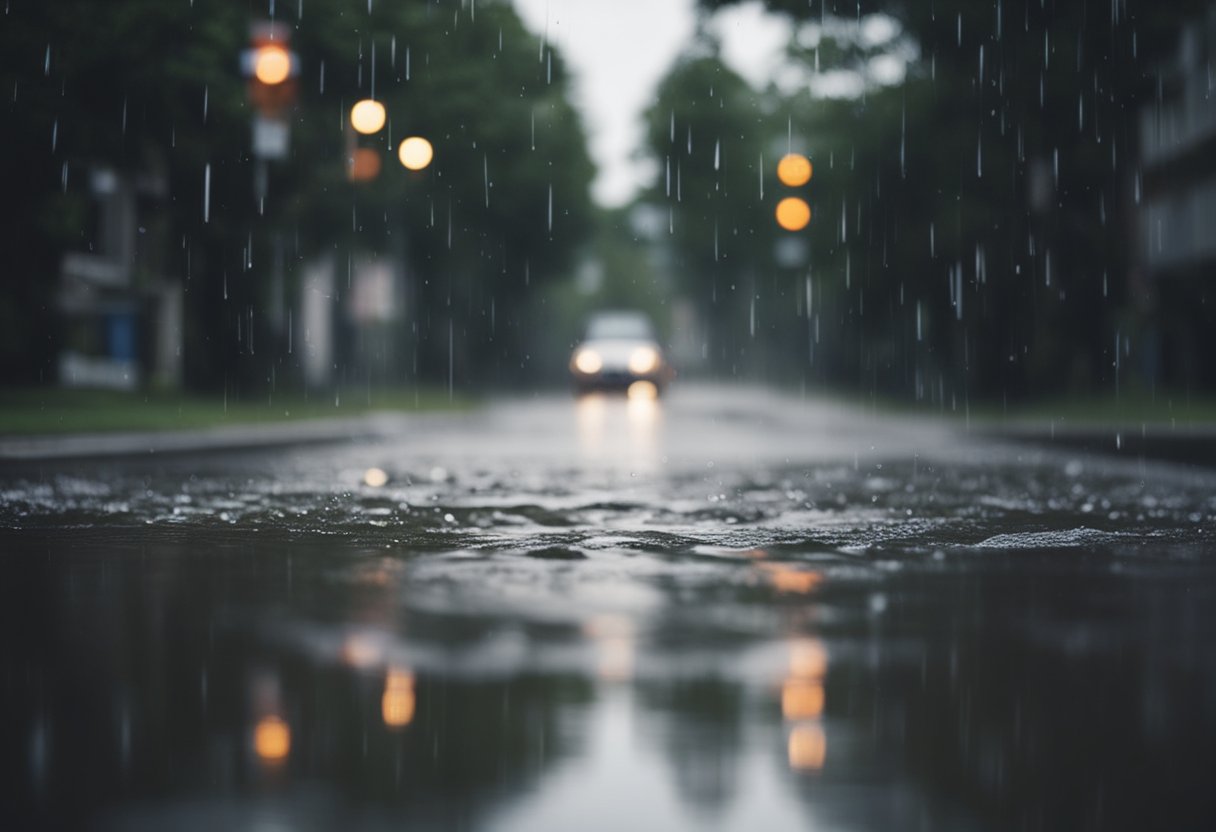Flooding and erosion pose significant challenges for many landscapes, causing damage to property and the environment. Effective surface water drainage solutions are essential to address these issues and maintain a stable terrain. Without proper management, excessive water accumulation can lead to long-term problems, compromising the foundation of structures and accelerating soil erosion.
Various drainage systems can mitigate these risks by redirecting water flow and preventing buildup. Options such as French drains, swales, and permeable pavements provide reliable ways to manage water levels efficiently. Using these techniques can reduce the impact of heavy rains and protect valuable land from deterioration.
Understanding Surface Water Drainage
Proper surface water drainage is essential for managing water flow and preventing issues like flooding and erosion. Key elements to be discussed include hydrology principles, drainage system types, and common problems faced.
Hydrology Basics
Hydrology examines the movement, distribution, and quality of water on Earth. This includes the water cycle’s components such as precipitation, runoff, evaporation, and infiltration.
Runoff occurs when water from rain or snow melt flows over land. Multiple factors influence it, including soil type, land slope, and vegetation.
Surface Water Drainage Systems
Surface water drainage systems aim to control and direct water away from areas where it could cause damage. Types of systems include:
- Open Channels: Ditches and canals that allow water to flow freely.
- Closed Conduits: Pipes and culverts that transport water underground.
- Swales: Shallow, vegetated channels that slow down and absorb water.
Each system has advantages and specific applications. Open channels are cost-effective but require space. Closed conduits are efficient in urban areas. Swales offer environmental benefits by filtering pollutants.
Key Drainage Solutions

Effective drainage systems are essential for managing surface water, preventing flooding, and reducing soil erosion. Some of the most effective solutions include channel drains, French drains, swales, and rain gardens.
Channel Drains and Trench Drains
Channel drains and trench drains are linear systems designed to intercept and convey surface water. They are commonly used in driveways, patios, and other hardscape areas where rapid water removal is necessary.
Key Points:
- Materials: Typically made from concrete, plastic, or metal.
- Installation: Requires precise leveling to ensure proper water flow.
- Maintenance: Regular cleaning needed to prevent blockages.
French Drains and Dry Wells
French drains and dry wells work by diverting water underground, allowing it to disperse naturally. French drains consist of a perforated pipe surrounded by gravel, while dry wells are underground storage systems.
Key Points:
- Applications: Ideal for areas with poor surface drainage.
- Installation: Needs proper grading and a fabric liner to prevent silt clogging.
- Maintenance: Periodic inspection and cleaning of the inlet are necessary.
Swales and Rain Gardens
Swales and rain gardens are landscape features designed to manage stormwater naturally. Swales are shallow, vegetated channels, while rain gardens are planted depressions that absorb water.
Key Points:
- Design: Must incorporate appropriate soil mix and native plants.
- Benefits: Provides habitat for wildlife and improves water quality.
- Placement: Typically located in low-lying areas to maximize water collection.
Erosion Control Strategies
Erosion control strategies encompass vegetative approaches, hardscaping solutions, and slope stabilization techniques. These methods help in retaining soil, preventing water runoff, and maintaining landscape integrity.
Vegetative Approaches
Vegetative approaches utilize plants to minimize erosion. Trees, shrubs, and grasses can significantly reduce soil displacement and water runoff. Groundcovers like periwinkle and native grasses form a dense mat of roots that anchor soil effectively, preventing erosion even on steep slopes.
For large areas, hydroseeding mixes seeds, mulch, and water in a slurry, allowing for quick germination and soil stabilization. Riparian buffers along water bodies also provide essential erosion control by filtering sediment and stabilizing banks. Plumbers in Las Vegas often recommend these solutions for homes in erosion-prone areas.
Hardscaping Solutions
Hardscaping solutions use non-plant elements like rocks, gabions, and retaining walls. Retaining walls, built with concrete or treated wood, provide solid support against soil erosion and collapse. They are especially useful on steep areas where vegetative approaches alone might be insufficient.
Gabion walls, which are wirework containers filled with rocks, provide both flexibility and strength in controlling erosion. Riprap—loose stone laid along shorelines or stream beds—helps to dissipate water energy and prevent soil washout. In urban environments, splash blocks and permeable pavers are effective in reducing runoff, as often seen in Las Vegas landscaping.
Slope Stabilization Techniques
Slope stabilization techniques are crucial for areas with steep or unstable terrain. Terracing divides a slope into steps, reducing runoff and providing flat planting areas. Each terrace acts as a barrier to slow down water flow, making it easier for plants to absorb water and reduce erosion.
Geo-textiles and erosion control blankets, installed on the soil surface, reinforce slopes and assist vegetation establishment. Soil nailing, which involves inserting steel nails into the slope, provides additional structural support. These techniques serve to maintain the integrity of slopes and protect properties from potential landslides or erosion.
Plumbers in Las Vegas often work with these strategies, ensuring proper drainage to maintain slope stability and prevent erosion in residential and commercial properties.
Professional Implementation
Professionals ensure the proper installation, maintenance, and compliance with local regulations of surface water drainage solutions. Properly implemented solutions help prevent flooding and erosion, safeguarding properties and the environment.
Hiring Expertise
For effective surface water drainage, hiring experienced professionals is crucial. Plumbers Las Vegas often come highly recommended for their expertise in managing complex drainage systems. Visiting https://activeplumbingandair.com/plumbing-services/ you can find professionals for your specific needs, identify potential issues, and design customized solutions.
Maintenance and Inspection
Regular maintenance and inspection are key to the longevity and effectiveness of drainage systems. Professional services include routine checks to clear blockages, repair damages, and ensure the system functions optimally.
Benefits:
- Prevention of system failure
- Avoidance of unexpected costs
- Prolonged system lifespan
Compliance and Regulations
Professionals stay updated with local and national regulations regarding surface water drainage. Compliance is essential to avoid legal issues and fines. In cities like Las Vegas, specific regulations govern the installation and maintenance of drainage systems.
Key Areas of Compliance:
- Permitting and approval processes
- Environmental impact assessments
- Adherence to safety standards
Hiring certified professionals ensures that all aspects of the drainage system, from installation to maintenance, are handled competently and in accordance with the law.

































